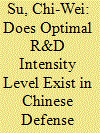| Srl | Item |
| 1 |
ID:
097502


|
|
|
|
|
| Publication |
2010.
|
| Summary/Abstract |
This short communication examines whether or not U.S. natural gas consumption follows a stationary process. Unlike previous research that has focused on regional country or industrial sector-based panel studies, this study undertakes a sub-national investigation of natural gas consumption for the 50 U.S. states. Levin et al. (2002), Im et al. (2003), Maddala and Wu (1999), and Hadri (2000) panel unit root and stationarity tests reveal that natural gas consumption is integrated of order one. However, once allowance is made for endogenously determined structural breaks, the Carrion-i-Silvestre et al. (2005), Im et al. (2005), and Westerlund (2005) panel unit root and stationarity tests indicate that natural gas consumption is integrated of order zero. Discussion of the structural breaks is briefly surveyed in relation to the natural gas industry's response to legislative actions.
|
|
|
|
|
|
|
|
|
|
|
|
|
|
|
|
| 2 |
ID:
177830


|
|
|
|
|
| Summary/Abstract |
This paper investigates whether there exists an optimal level of research and development (R&D) intensity, at which defense enterprises are able to maximize their market performance. The Panel Threshold Regression Model was applied to probe the link between R&D intensity and sales growth for defense listed enterprises, in China. The empirical results indicate that the Law of Gibrat does not hold and, unlimited input in R&D, does not guarantee positive paybacks. This may lead to the assumption that there is an optimal R&D intensity level in Chinese defense enterprises. Due to the fact that the defense industry has broken entrance barriers and considering the introduction of social capital into R&D activities, managers and top management should set more specific guidelines and provisional benchmarks to ensure effective R&D resource allocation in order to achieve maximum performance.
|
|
|
|
|
|
|
|
|
|
|
|
|
|
|
|